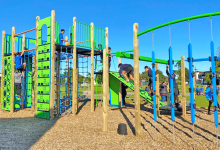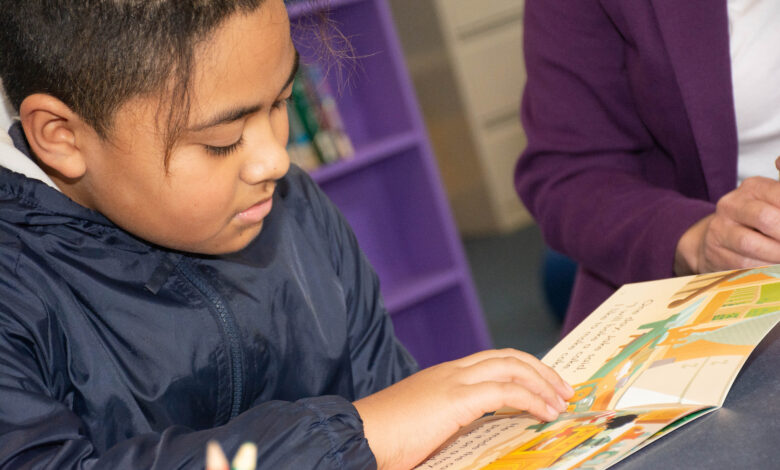
Literacy skills can impact students future employment prospects, and their engagement with society outside of school.
Read the Term 4 edition of School News HERE
More than the ability to read and write, literacy in the New Zealand Curriculum focusses on interpreting texts which are communicated orally, visually and in writing. Tamariki also learn how to communicate increasingly complex ideas by creating oral, written and visual texts. This will ensure students become skilled speakers and listeners, writers and readers, and presenters and viewers.
Not all students in Aoteoroa New Zealand, though, are meeting literary standards. A 2020 UNICEF report found that only 64.6 percent of 15-year-olds across the country had basic proficiency in reading and maths. This means that around 35 percent, or more than one third of 15-year-olds, struggle with reading and writing.
These findings were echoed by a report conducted by not-for-profit Education Hub, an organisation which aims to bridge the gap between research and teaching practice. Its 2022 report found that the performance of both primary and secondary students has been declining in most reliable measures of achievement, particularly since 2009. In recent years, reading achievement declined faster than in comparable countries, and the proportion of students achieving at the highest levels in reading also decreased.
Poor literacy levels can broadly impact a person’s life. The World Literacy Foundation (WLF) said that people with below average literacy rates are more likely to experience poorer employment opportunities and outcomes, and lower wages. This can lead to a dependency on welfare, low self-esteem, and higher rates of crime.
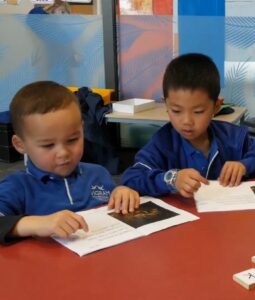
Further to this, parents with poor literacy are more likely to prioritise work over education, and have lower expectations with regard to schooling. This can lead to a cycle of disadvantage through generations. Conversely, strong literacy skills in parents will positively impact a children’s education, as they will be able to help and support their child with their learning, and effectively communicate with teachers about their child’s progress at school.
Supporting students, teachers and families
Helping all students in your classroom to meet literacy requirements can be complex. A range of factors will impact a student’s performance in literacy, including their educational background to date, the language or languages spoken at home, and whether English is an additional language. Different learning needs should also be considered, for example dyslexia, vision or hearing impairment or ADHD or ASD which can make concentration more difficult.
While literacy is not just about a student’s ability to read and write, these skills form the cornerstone of literacy more broadly. Students who struggle with literacy, may not have the tools to enjoy reading. Disappointment, frustration, and a feeling that it is too hard will hinder progress. Capturing a student’s interest before you read with them, and sharing their favourite books can help foster a love of reading. In some instances, using audio books may help bridge the gap and help student’s access texts.
Improving literacy for students is a collaborative effort, involving the student, educators and families.
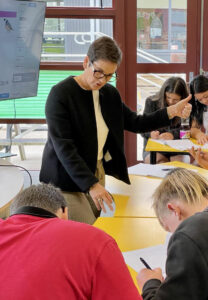
A whole-of-school literacy framework may be useful to ensure literacy is taught uniformly across the school. This is particularly important for younger students who are developing these key skills.
At home, families can be encouraged to read often with their children. Simply sharing books each day at home can have a positive impact on a children’s literacy development. Families may like to read reference or fact books on a topic they enjoy a shared interest in. Magazines, newspapers, community newsletters and anything else that can be read to tamariki can all be used as at home reading sources.
Ongoing professional development is essential to ensure educators can deploy evidence based, best practice models for supporting all students’ literacy needs. This could be undertaken in small groups across subject areas or year levels, or as a whole-of-school opportunity. Your school may wish to engage an external provider to assist in delivering PLD specific to literacy education.
Software solutions can at times prove useful in aiding student’s literacy development, and assist in reinforcing explicit teaching. It is important, though, to ensure that programs work towards New Zealand Curriculum achievements, and do not replace the classroom teacher.
What the experts say
Carla McNeil from Learning Matters said educators should start by using assessment tools that help determine ākonga capabilities and immediate teaching needs. “Schools implementing a Structured Literacy approach will have a suite of assessments that identify learning needs in foundation skills. Identifying these skills and then teaching them systematically and explicitly using age-appropriate resources and texts is crucial.
“It’s also important to have a range of suitable decodable texts to build fluency skills. These texts enable students to develop self-belief in their ability as readers. Motivation to read stems from success.
“Explicitly teaching vocabulary and comprehension is crucial for building comprehension skills. Identify subject specific language and be sure to teach the word structure, meaning and syllables or morphemes within the word as this ensures greater understanding.”
When it comes to selecting teaching resources to aid in improving and maintaining literacy standards, Ms McNeil highlighted some key considerations. “First and foremost, resources should be tailored to student needs based on diagnostic assessments. Resources should be age appropriate and build in complexity from simple to complex.
“Remember computers don’t teach students, teachers do. Don’t mistake this and think that a computer software programme will be the silver bullet. Prioritise a structured literacy approach, and ensure it has a thorough scope and sequence, it builds through word – sentence – text level so students can be successful.”
According to the 2018 Census, approximately 190 languages are spoken in New Zealand (Stats NZ 2018). Although English is spoken by 95 percent of the population, the next common languages spoken are Te reo Māori (186,000 speakers), Samoan (102,000 speakers), Northern Chinese including Mandarin (95,000 speakers), and Hindi (69,500 speakers).
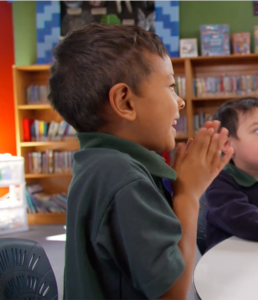
Professor Gail Gillon from Better Start Literacy Approach (BSLA) said that given this diversity in language, understanding how young children who enter school learning English as their second, or other language, succeed in their early literacy development is critical. “We also need to understand how English literacy teaching practices reflect our improved understanding of the cultural and social importance of bilingualism and indigenous languages such as Te reo Māori.”
Professor Gillon said that “research conducted by BSLA suggests that when our junior school teachers are well supported to implement research based and culturally responsive early literacy teaching, children in their class who are ELL can quickly develop foundational literacy skills in English.”
John Kennedy from ITECNZ said encouraging independent reading is important as it allows students to explore areas of interest in depth. “Students can read a variety of information from different sources, and develop critical thinking skills.”
As a first step in helping students who may be falling behind in literacy, Mr Kennedy recommends comparing oral/listening comprehension with reading comprehension to identify gaps and where structural interventions and support are needed. “Very low-level readers, for example, may need to develop fundamental oral literacy and vocabulary before they can develop their reading comprehension further.
“To experience the joy of reading the barriers to reading need to be initially addressed. Engaging students in high interest oral comprehension activities, and addressing student foundational reading skills such as decoding/contextual guessing, will free up the students mind to enjoy the content material,” Mr Kennedy said.
“Literacy software solutions should be appropriately levelled to allow students to engage in their zone of proximal development. Programs should include scaffolds that adjust the learning experience based on individual progress, and provide meaningful data for teachers that help drive appropriate skills development.”
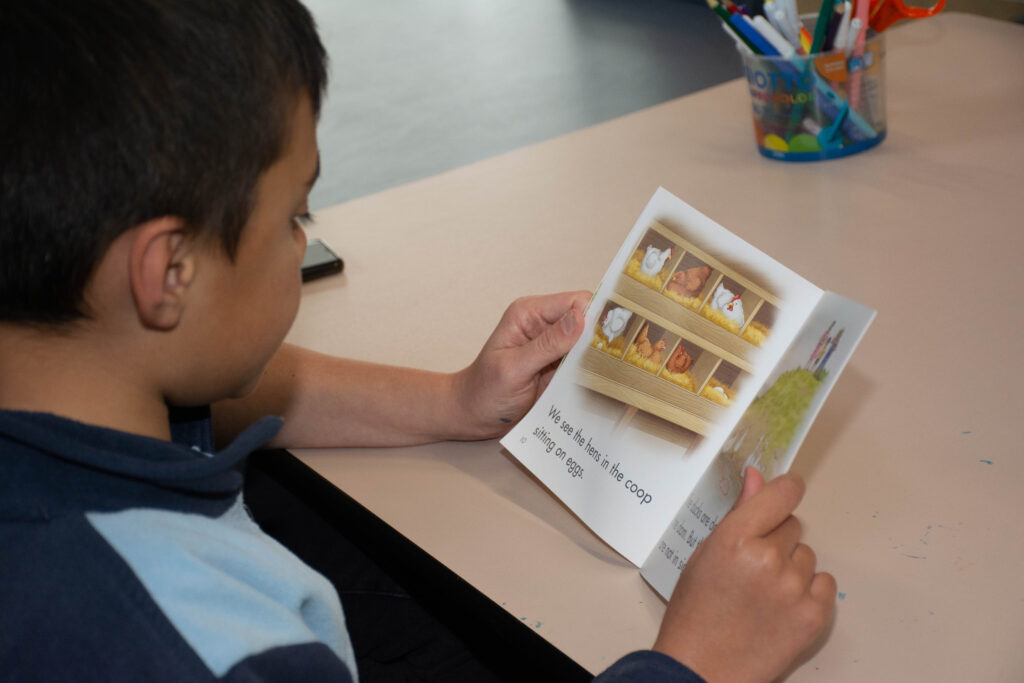
Dame Wendy Pye from Wendy Pye Publishing (Sunshine Books) said we are amid a literacy crisis for large numbers of primary and secondary students. “With many schools moving to using a structured literacy approach for the teaching of English, the hope is there that this is an effective change that will help our struggling students.
“The early, short decodable readers are ideal for teaching grapheme-phoneme correspondences. Longer texts with more complex structures and concepts, while hard to write, are vital for giving all students opportunities to engage with longer texts and apply critical thought.”
Dame Wendy said there is a lack of age-appropriate decodable stories for older primary school students who are struggling with literacy. “Some of these older students will never have followed a synthetic phonics sequenced literacy programme. This is a key element of getting them on track with learning.
“Reading and literacy teaching can be brought into the ‘real world’ with modern relatable texts, featuring children that look like the children reading them, doing the things the children do. Author visits and trips to the library may also help struggling children to see that books have a place in the real world. Book clubs and discussion groups give children a chance to voice their views and develop critical thinking about texts.”







